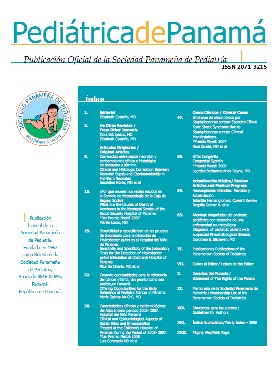Pets and the emotional development or health of children and adolescents
Authors
DOI:
https://doi.org/10.37980/im.journal.rspp.20181624Keywords:
editorial, pets, children developmentAbstract
Female newborn, product of a 36-year-old mother, G5P4C0A0, diagnosed with a 30.5-week pregnancy, severe preeclampsia, anhydramnios, and intrauterine growth retardation. With five prenatal controls, HIV negative, non-reactor VDRL, typing, Rh O +, who was born via caesarean section showing absence of amniotic fluid, apgar 9/9, weight: 1040g, height: 33 cm, head circumference: 32 cm, undetermined sex, low-set ears, bilateral pulmonary hypoventilation, undifferentiated genitalia, presence of a single fused lower extremity with presence of 4 fingers. He was admitted to Neonatology with moderate respiratory distress. Brain ultrasound: cerebellum with slight decrease in volume, no hydrocephalus, no intraventricular hemorrhage. Abdominal ultrasound does not l The influence of pets when interacting with humans is already described in ancient Greece, people with incurable diseases to raise their self-esteem, they took horseback riding and in China there is a painting titled Spring that dates back to 1,250 a. C. in which the use of the dog as a guide for the visually impaired is illustrated. However, it was not until the mid-18th century that animals began to be seen as a "socializing agent" when John Locke (1699), the English philosopher and physician, suggested that children should be given "a dog, a squirrel, birds, or other "animals to" promote the development of feelings and responsibility "ogra define pancreas, kidneys or bladder.
Downloads
Published
Issue
Section
License
Copyright (c) 2020 Infomedic InternationalDerechos autoriales y de reproducibilidad. La Revista Pediátrica de Panamá es un ente académico, sin fines de lucro, que forma parte de la Sociedad Panameña de Pediatría. Sus publicaciones son de tipo gratuito, para uso individual y académico. El autor, al publicar en la Revista otorga sus derechos permanente para que su contenido sea editado por la Sociedad y distribuido Infomedic International bajo la Licencia de uso de distribución. Las polítcas de distribución dependerán del tipo de envío seleccionado por el autor.






